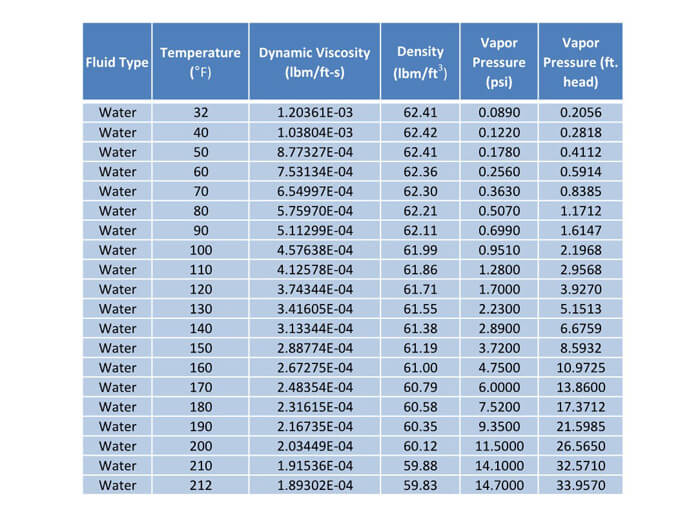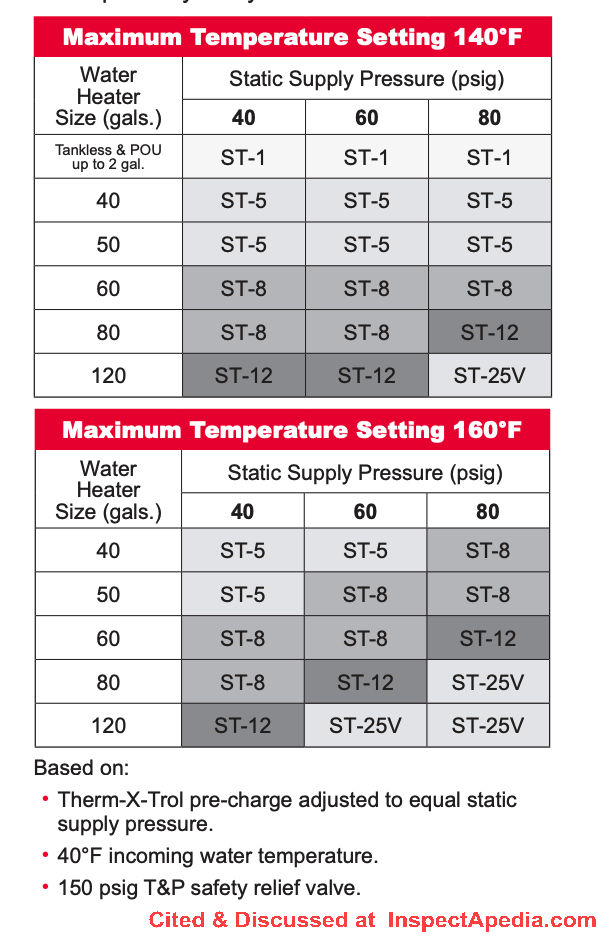Are you tired of unexpected leaks or pressure issues with your water heater? The solution might be simpler than you think: a correctly sized expansion tank.
When it comes to maintaining a safe and efficient hot water system, the size of your expansion tank plays a crucial role. But how do you determine the right size for your needs? By understanding this essential component, you can prevent costly repairs and ensure a steady flow of hot water.
We’ll unravel the mystery behind choosing the perfect water heater expansion tank size, so you can enjoy peace of mind and a smoothly running home. Dive in to discover how to make the best choice for your household.

Credit: www.youtube.com
Page Contents
Choosing The Right Expansion Tank
Selecting the correct water heater expansion tank size ensures efficient system performance and prevents pressure buildup. Consider your home’s water pressure and heater capacity to find the perfect fit. Proper sizing helps maintain safety and extends the lifespan of your heating system.
Choosing the right expansion tank for your water heater can feel like solving a puzzle. It’s not just about picking any tank off the shelf; it’s about understanding the specific needs of your home. Getting this right ensures your water heating system runs efficiently, saving you time, money, and potential headaches.Factors Influencing Size
Many factors play a role in determining the ideal expansion tank size for your water heater. First, consider the capacity of your water heater. A 50-gallon heater, for example, will require a different tank size compared to a 30-gallon one. Next, think about your home’s water pressure. High water pressure can require a larger expansion tank to handle the extra force effectively. Finally, take into account the temperature settings of your water heater. Higher temperatures increase water expansion, which means your expansion tank needs to accommodate this expansion without causing pressure issues.Common Mistakes To Avoid
One common mistake is selecting an expansion tank solely based on the price. A cheaper option might save you money upfront but could lead to costly repairs if it fails to meet your system’s requirements. Another pitfall is neglecting to check your water pressure. You might assume it’s at a standard level, but variations can significantly impact the effectiveness of your expansion tank. Always measure it to ensure you’re making an informed choice. Finally, don’t ignore the importance of professional advice. Consulting with a plumber can provide insights you might not consider on your own. This step could be the difference between a seamless installation and a frustrating ordeal. Have you ever found yourself dealing with unexpected water heater issues? Perhaps the answer lies in your choice of expansion tank. Making informed decisions now can prevent future headaches.
Credit: greensafaris.com
Understanding Thermal Expansion
Thermal expansion is a fundamental concept in physics. It affects household water heating systems. As water heats, its volume increases. This expansion can lead to pressure build-up. Without proper management, it can damage your water heater. Understanding thermal expansion helps prevent these issues.
Impact On Water Heater
Water heaters are designed to withstand pressure. But excessive pressure can lead to serious issues. Leaks and bursts are common risks. High pressure wears out internal components faster. This reduces the lifespan of the heater. Regular maintenance is crucial. Monitoring expansion is essential for safety.
Role Of Expansion Tanks
Expansion tanks play a vital role. They absorb the extra water volume. This prevents pressure build-up in the water heater. An expansion tank ensures system stability. It helps maintain consistent water pressure. Installing the right size tank is important. It ensures optimal performance and safety.
Installation Guidelines
Proper installation of a water heater expansion tank ensures optimal performance. Following guidelines helps prevent leaks and prolongs the system’s life. Correct placement and connection are crucial for effective operation.
Positioning The Tank
Place the expansion tank near the water heater. Ensure it is easily accessible for maintenance. Position it upright to allow for proper function. Securely fasten the tank to a sturdy surface. This prevents movement and potential damage.
Connecting To The Plumbing System
Use a tee fitting to connect the expansion tank to the plumbing. Attach it to the cold water line near the water heater. Ensure all connections are tight to prevent leaks. Use appropriate tools to avoid damaging the pipes. Test the system for proper pressure once connected.
Maintenance And Care
Choosing the right size for a water heater expansion tank is crucial for preventing pressure build-up. Proper maintenance ensures the system functions efficiently and extends its lifespan. Regular checks help identify issues early, saving time and costs.
Maintaining and caring for your water heater expansion tank is crucial for its longevity and efficiency. A well-maintained tank ensures that your water heater runs smoothly, saving you from unexpected cold showers. Regular attention to your expansion tank can prevent costly repairs and extend its lifespan significantly.Regular Inspections
Regular inspections are key to keeping your expansion tank in top shape. Set a reminder to check your tank at least twice a year. Look for any visible signs of leaks or corrosion. Check the air pressure using a pressure gauge. The pressure should match the manufacturer’s recommendations. If you’re unsure, consult your manual or contact a professional. A friend once shared how skipping inspections led to a flooded basement. Don’t let that happen to you!Signs Of Wear And Tear
Identifying wear and tear early can save you from bigger headaches down the line. Keep an eye out for rust spots or water stains on the tank. These are often early signs of internal corrosion. Listen for strange noises like banging or gurgling. This could indicate a problem with the tank’s bladder or an imbalance in pressure. If you notice fluctuating water temperatures, it might be time to replace the tank. Remember, a proactive approach can save you both time and money. Regular maintenance might seem tedious, but think of it as an investment in your home’s comfort. How often do you inspect your expansion tank? Are you ready to avoid potential disasters by taking action today?Troubleshooting Common Issues
When you have a water heater expansion tank, it’s crucial to understand how to troubleshoot common issues that may arise. Expansion tanks play a vital role in maintaining pressure and preventing leaks. Getting familiar with potential problems and their solutions can save you from costly repairs and water damage. Let’s dive into the nitty-gritty of troubleshooting these common issues.
Identifying Pressure Problems
Have you noticed fluctuating water pressure in your home? It might be time to check your expansion tank. High or low pressure can indicate a malfunction. Look for unusual sounds like banging or hissing near your water heater.
Observe the pressure gauge. If it’s constantly reading high, the tank might be overfilled or the pressure valve could be stuck. If it’s reading low, there might be a leak or the diaphragm inside the tank could be compromised.
Adjusting the pressure using the valve can sometimes resolve the issue. However, if the problem persists, consider consulting a professional to avoid further complications. Are you willing to gamble with your home’s plumbing?
Solutions For Tank Leaks
Tank leaks are often a result of wear and tear. Water stains around the base of your tank are a clear giveaway. You might also notice dampness or puddles nearby. These are red flags you shouldn’t ignore.
To tackle leaks, first inspect the connections. Tighten any loose fittings with a wrench. If the leak persists, the tank itself may be corroded. In such cases, replacement might be necessary.
Sometimes, a simple patch can extend the tank’s life. However, if the damage is significant, investing in a new expansion tank is a wise choice. What’s more valuable, your peace of mind or a few saved dollars?
Addressing these issues promptly ensures your water heater functions efficiently. Regular inspections can prevent these problems before they escalate. Do you regularly check your expansion tank?

Credit: inspectapedia.com
Benefits Of Proper Tank Size
When it comes to ensuring the optimal performance of your water heater system, the size of the expansion tank plays a crucial role. A properly sized expansion tank can lead to significant benefits, enhancing efficiency and extending the lifespan of your water heater. Let’s dive into how the right tank size can make a difference.
Efficiency Improvements
A correctly sized expansion tank helps maintain consistent water pressure. This stability minimizes stress on your water heater, ensuring it operates smoothly.
Imagine your water heater working without the constant pressure fluctuations. It leads to less wear and tear, resulting in fewer repairs and reduced energy consumption.
Have you noticed fluctuating water temperatures? A proper expansion tank size can help mitigate this issue, providing a more consistent and comfortable experience.
Longevity Of Water Heater System
Proper tank sizing is not just about efficiency; it’s about extending the life of your water heater. By reducing pressure stress, your system experiences less strain over time.
A friend once shared how their old water heater lasted twice its expected lifespan. The secret? A well-sized expansion tank that helped prevent leaks and damage.
Do you want to avoid the hassle of frequent replacements? Investing in the right expansion tank size can save you money and effort in the long run.
How often do you think about your water heater’s longevity? With proper tank sizing, it becomes less of a worry, allowing you to focus on other home improvements.
Frequently Asked Questions
Is It Okay To Oversize An Expansion Tank?
Oversizing an expansion tank is generally acceptable. It offers better pressure control and reduces system stress. Ensure the tank fits within the system’s design limits. Proper sizing minimizes water hammer and maintains efficiency. Consult a professional to confirm compatibility with your system.
Do You Need An Expansion Tank On A 50 Gallon Water Heater?
A 50-gallon water heater often requires an expansion tank to manage pressure changes and prevent damage. Local codes may mandate it, especially in closed systems. Check regulations and consult a plumber for proper installation. An expansion tank enhances safety and longevity of the water heater.
What Is The Rule Of Thumb For Heating Expansion Vessel Sizing?
The rule of thumb for heating expansion vessel sizing is to allocate 10% of the total system volume. This allows for adequate pressure management and thermal expansion in heating systems. Adjustments may be necessary based on specific system requirements or manufacturer guidelines.
Always consult a professional for precise calculations.
Is A 2 Gallon Expansion Tank Enough?
A 2-gallon expansion tank may suffice for small residential systems. Check your system’s specifications and consult a professional. Proper sizing is crucial for efficient operation and to prevent pressure issues. Always consider the tank’s compatibility with your heating or cooling system to ensure optimal performance and longevity.
Conclusion
Choosing the right expansion tank size is crucial. It ensures the safety of your water heater. An incorrect size can cause problems. Such as pressure build-up or leaks. Always check your system’s requirements. Consult a professional if unsure. This helps in avoiding costly repairs.
A proper expansion tank extends your heater’s life. Provides peace of mind too. Regular maintenance is key. Keeps your system running efficiently. So, make informed decisions. Protect your home and investment. Remember, a well-functioning system adds comfort. And safety to your home.
